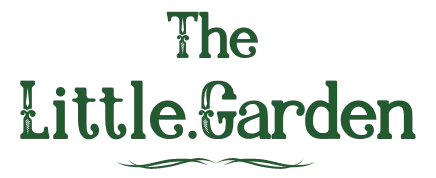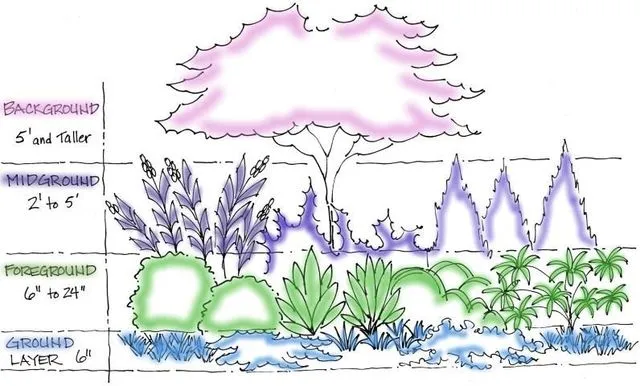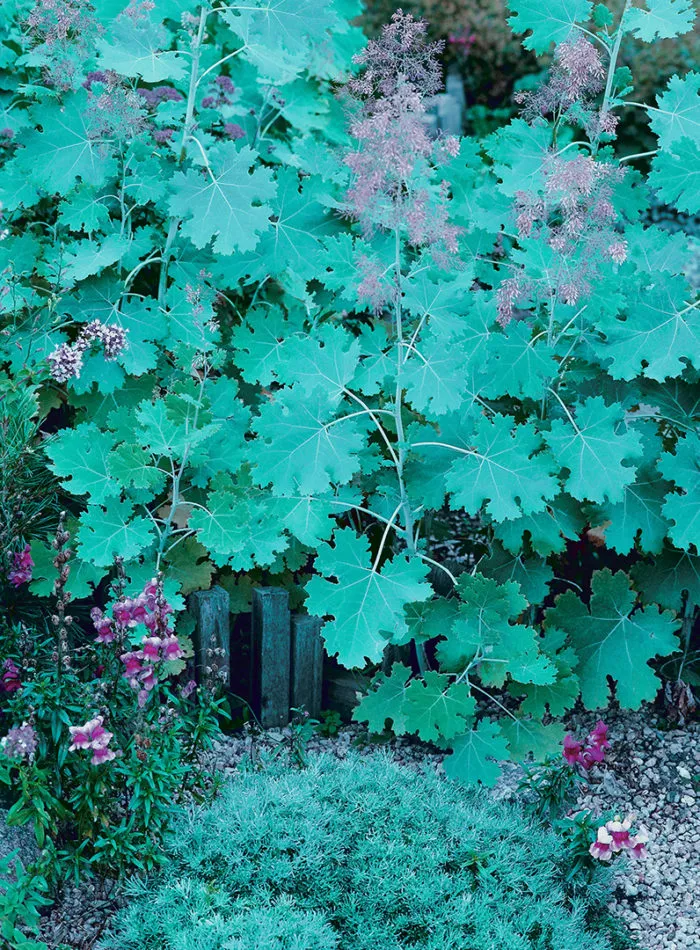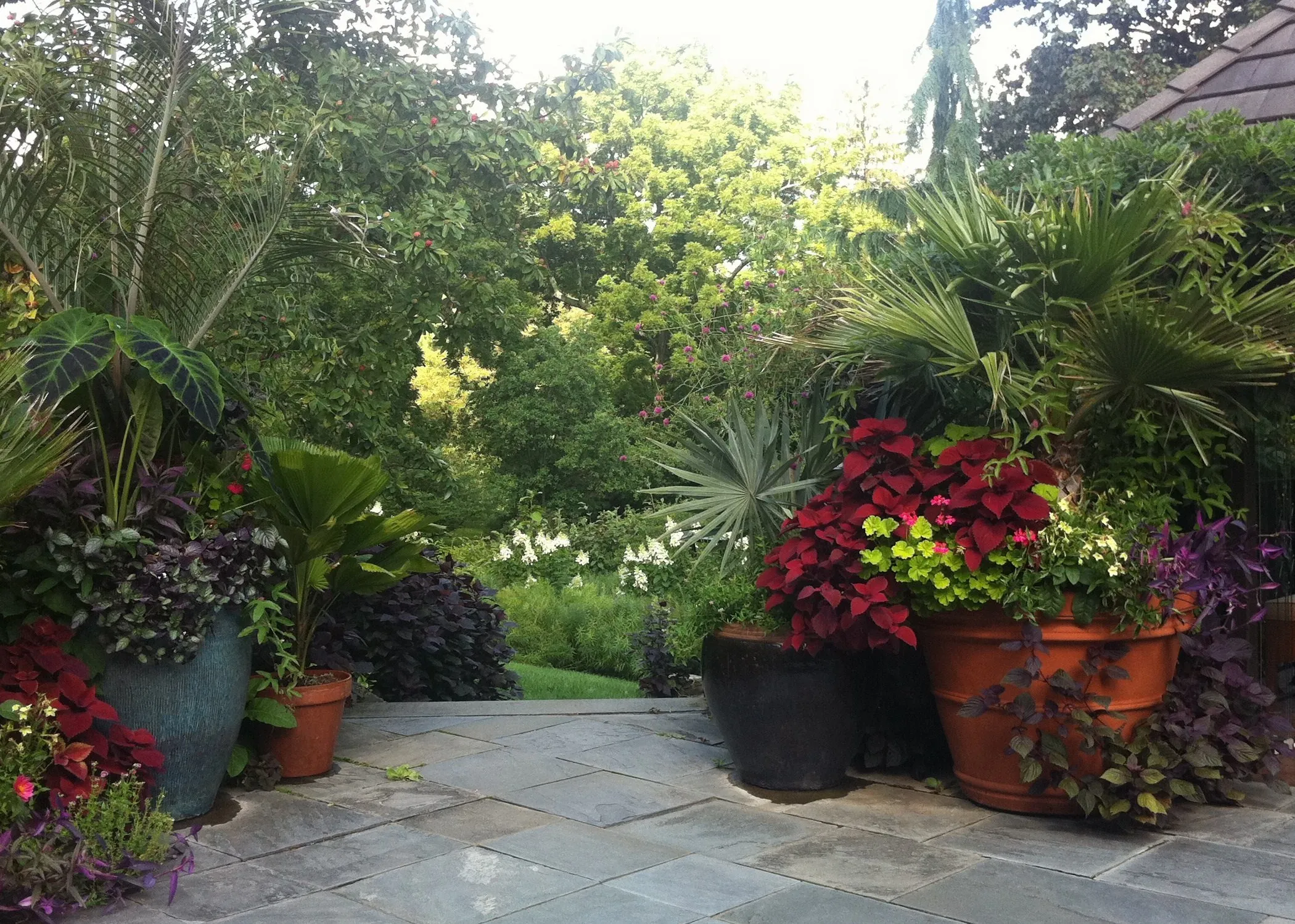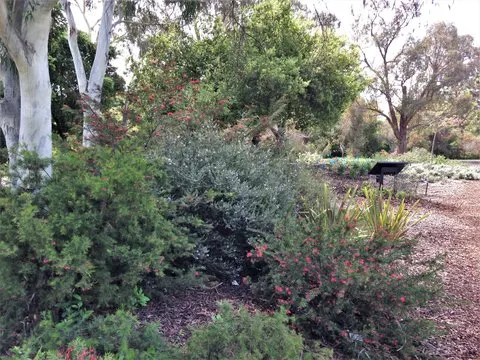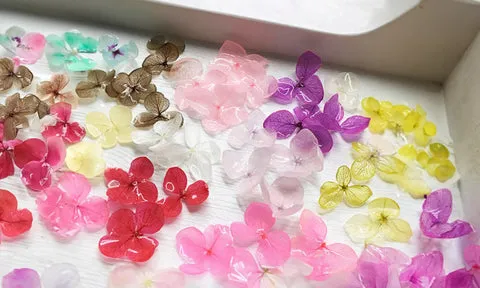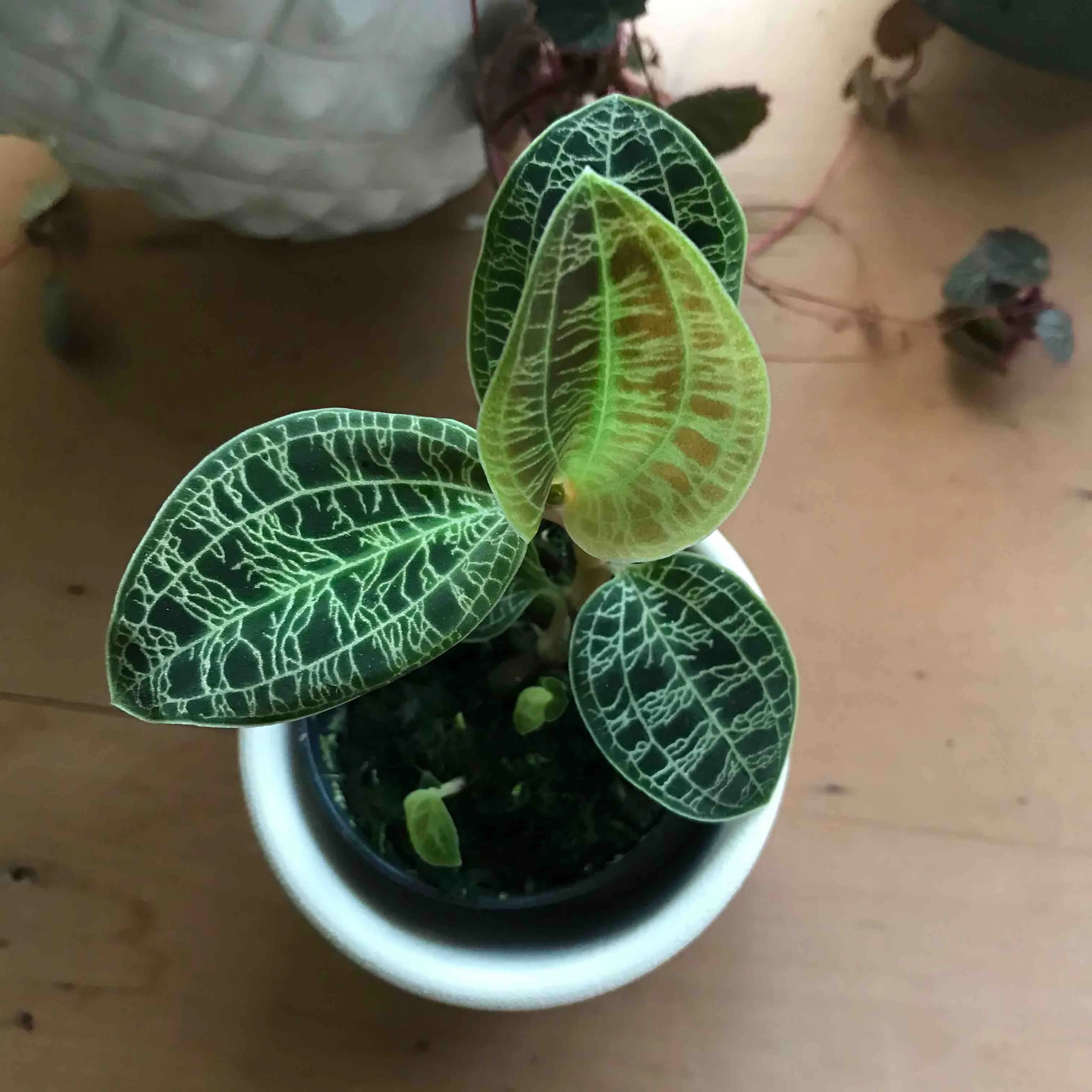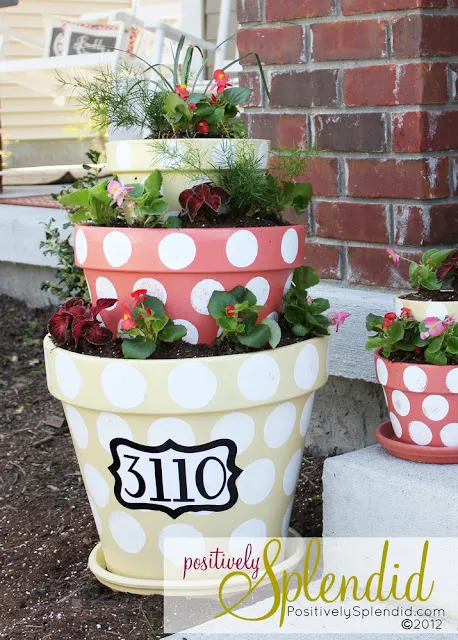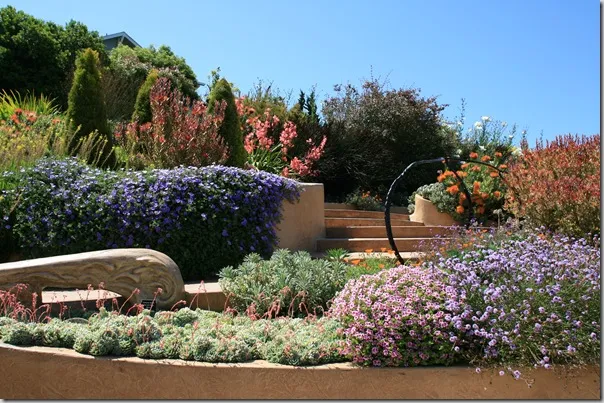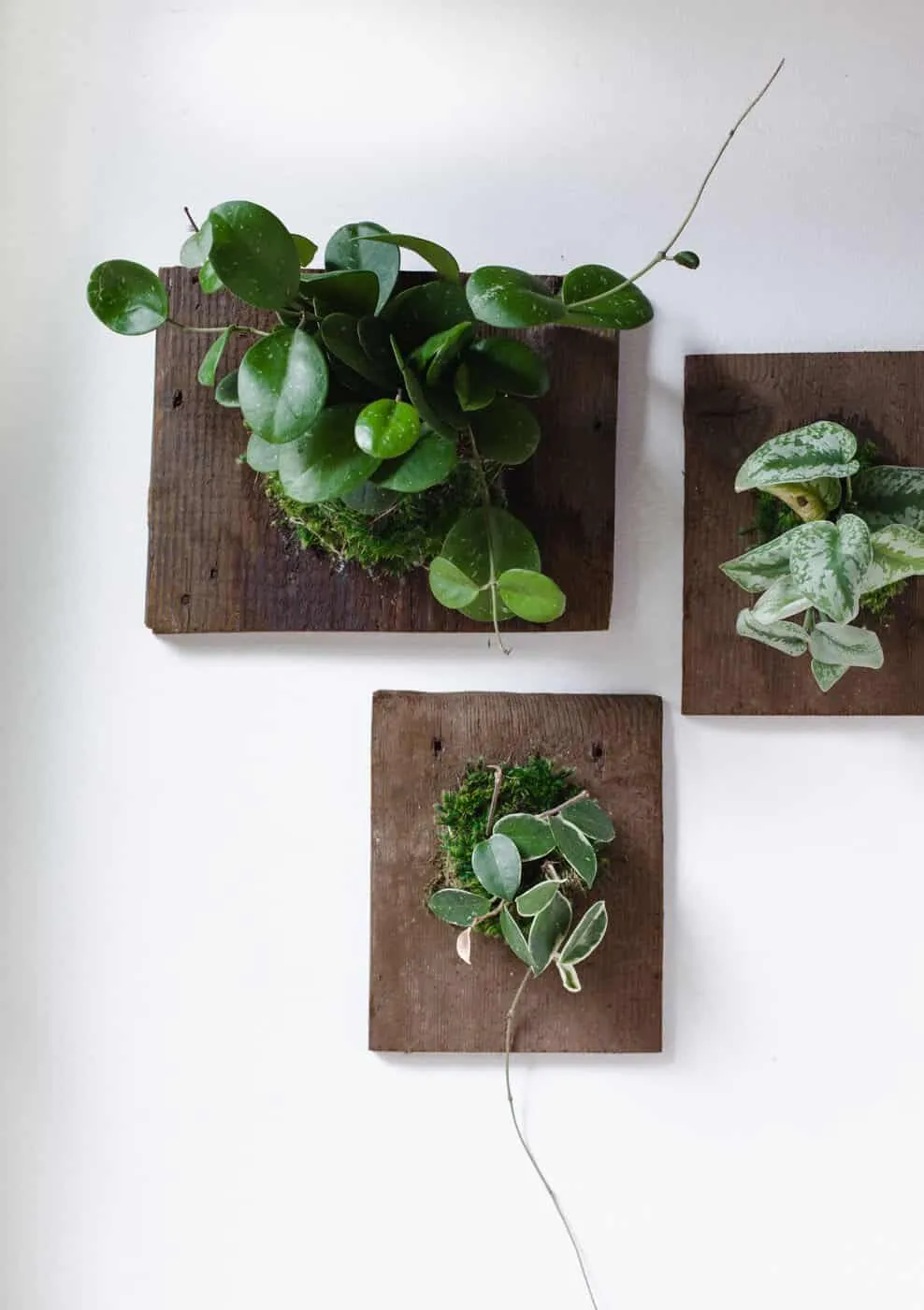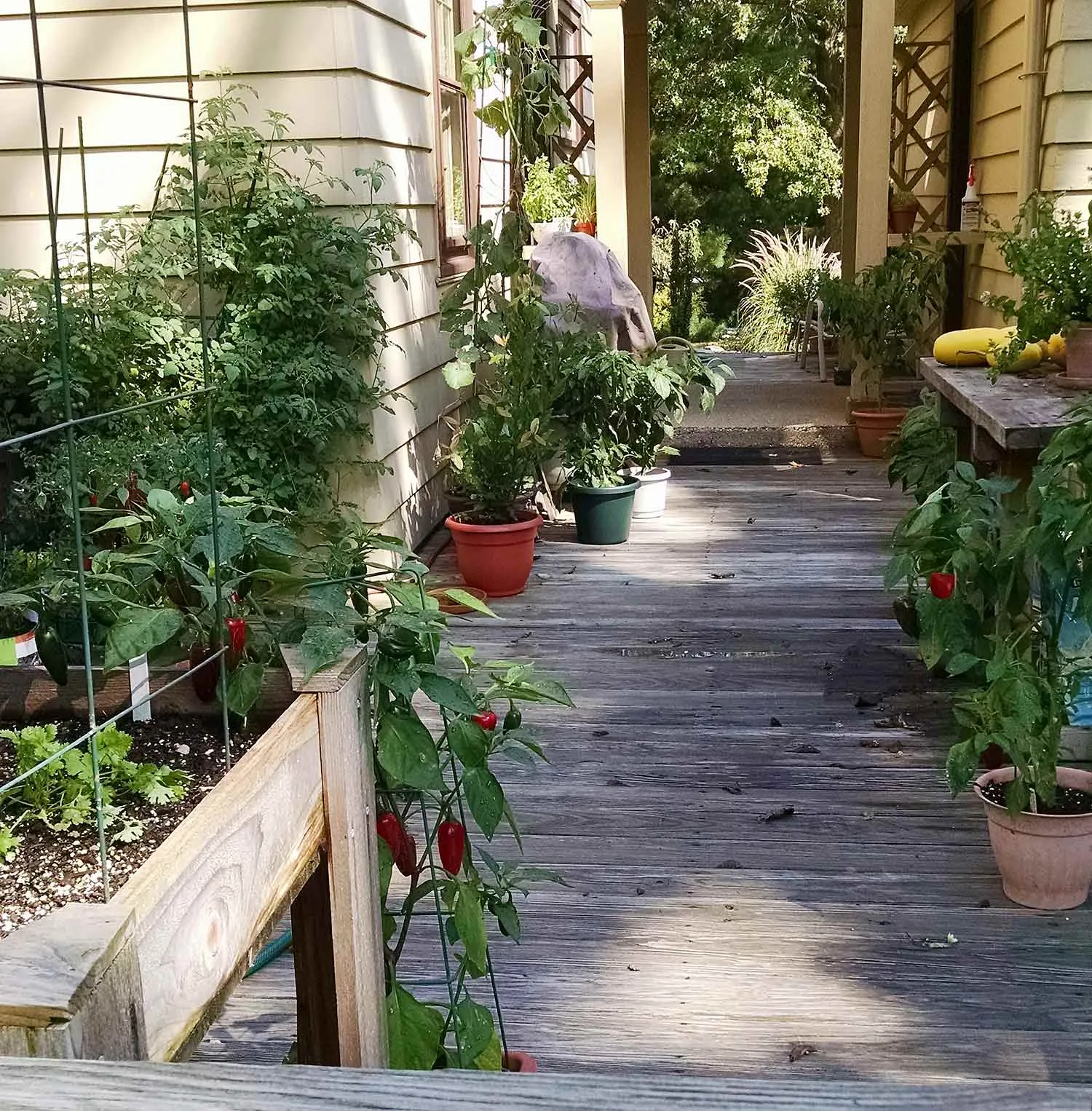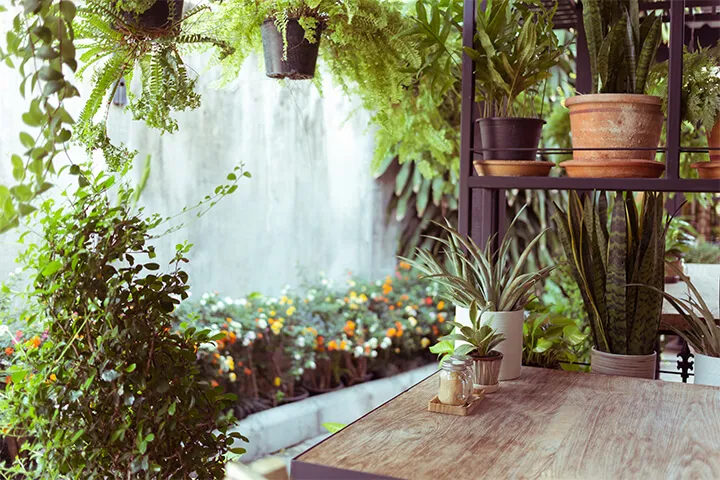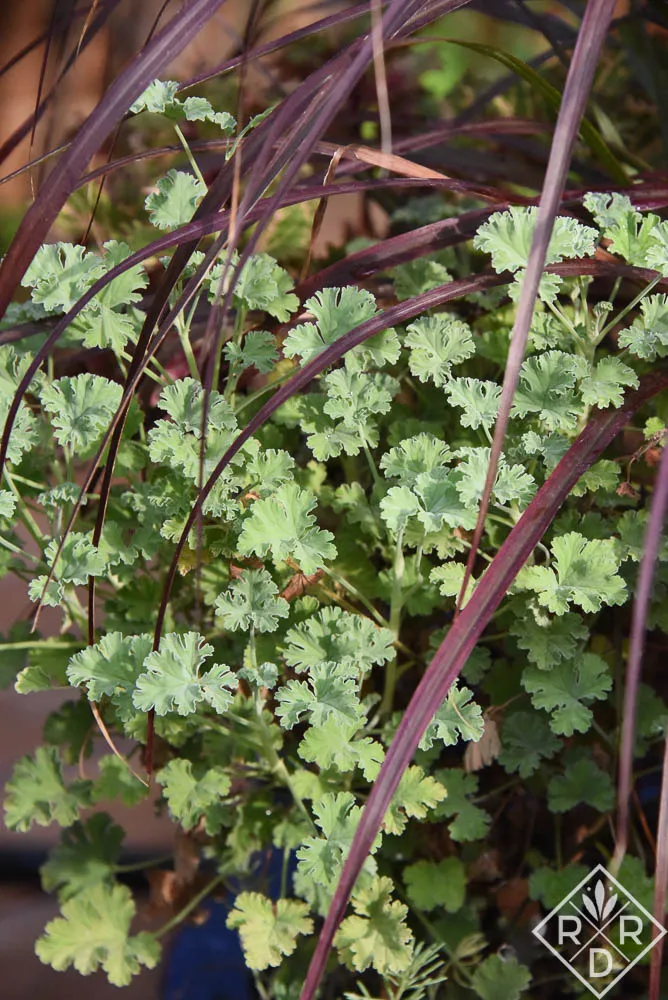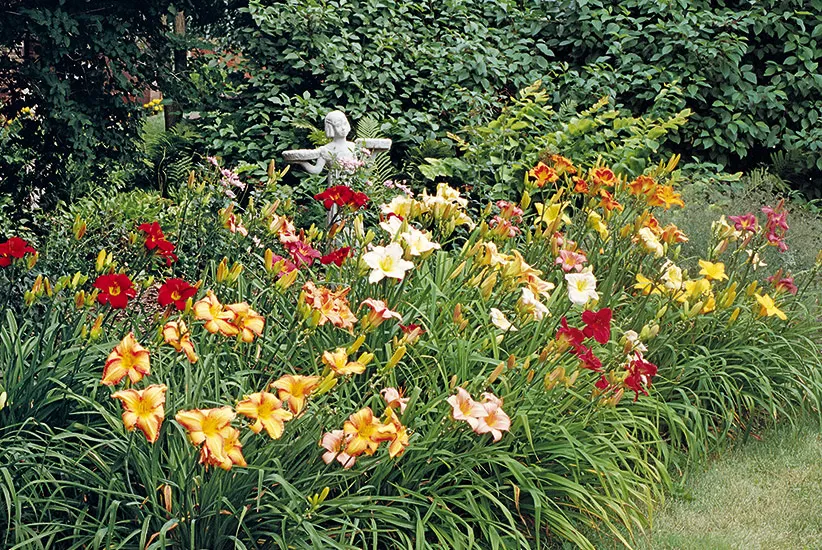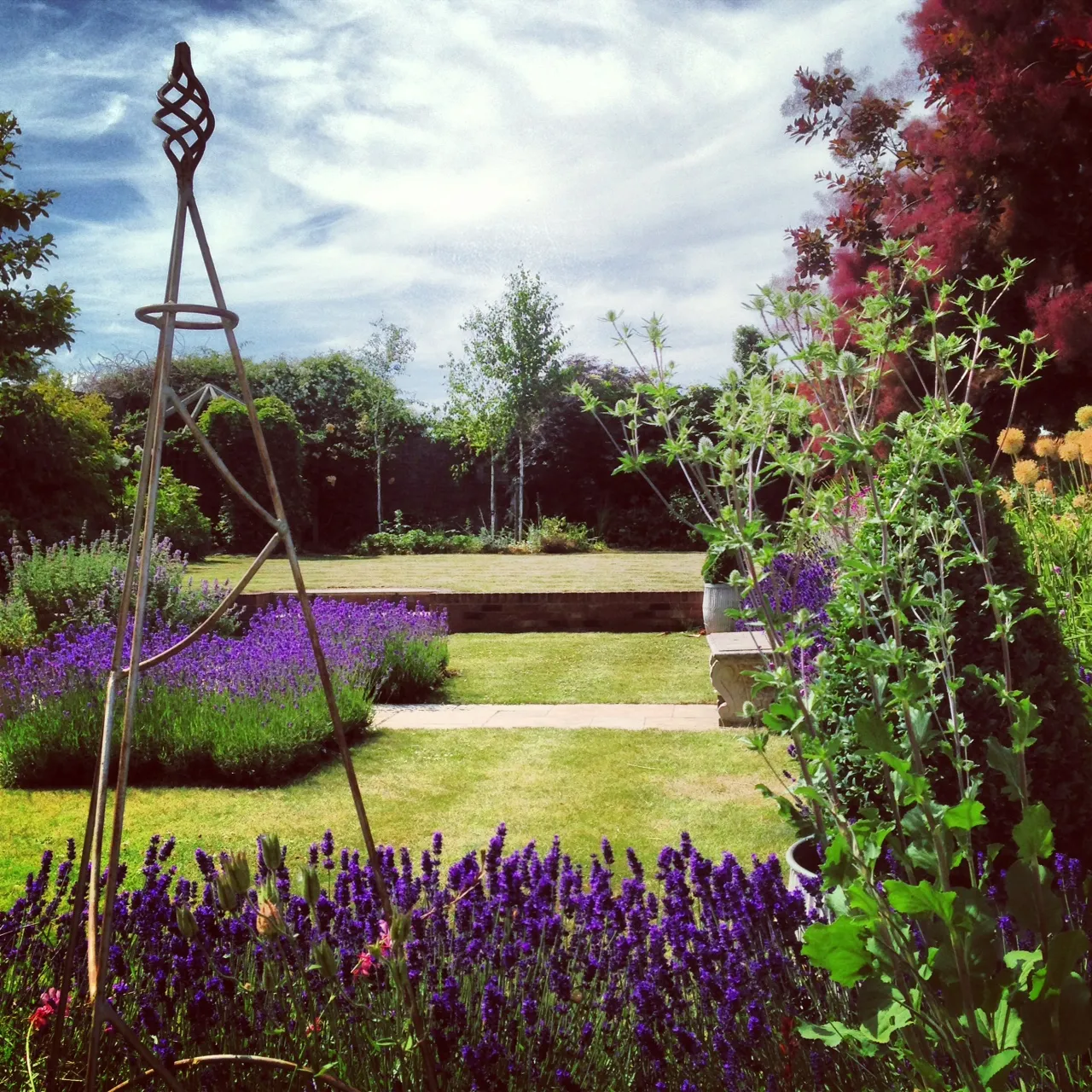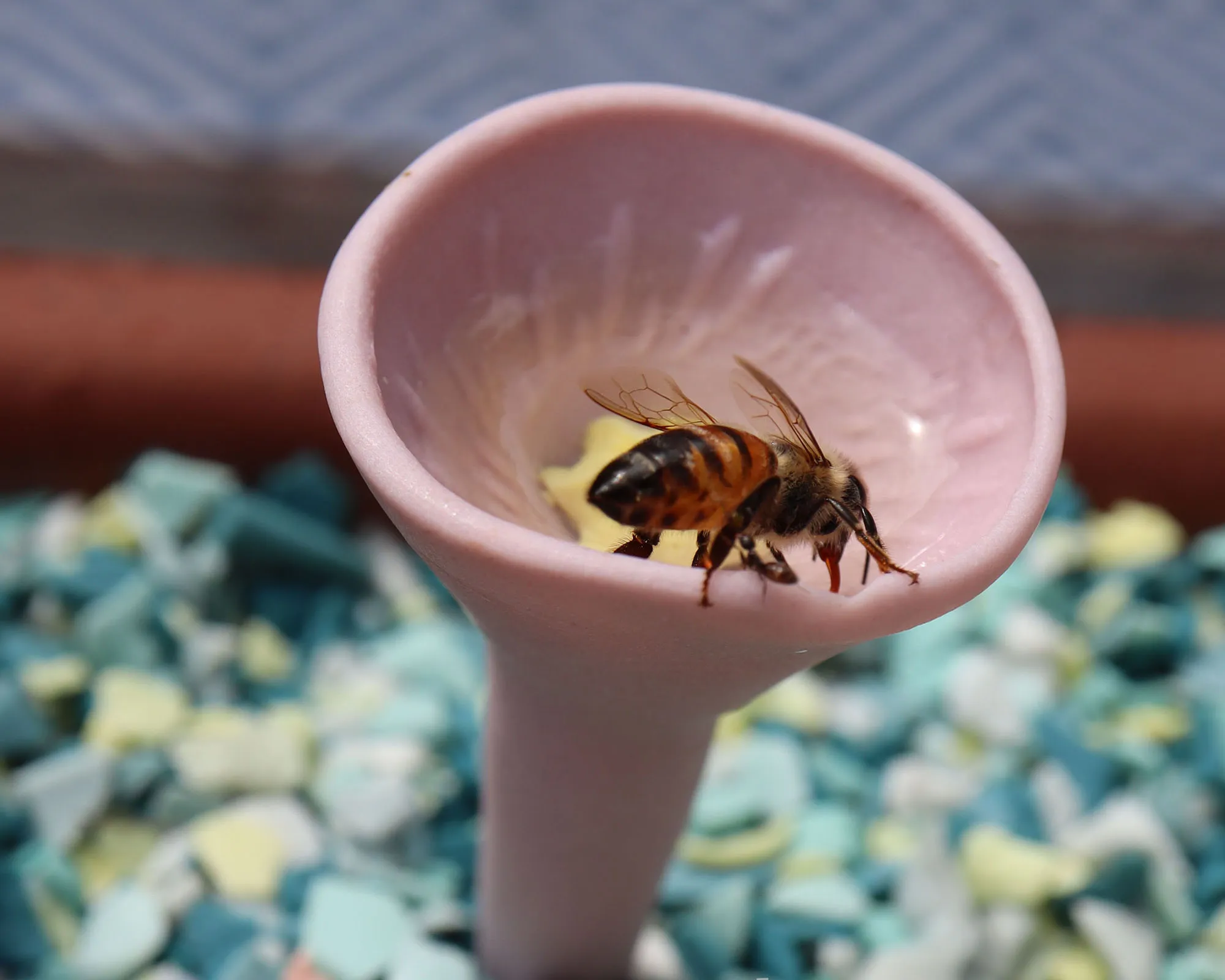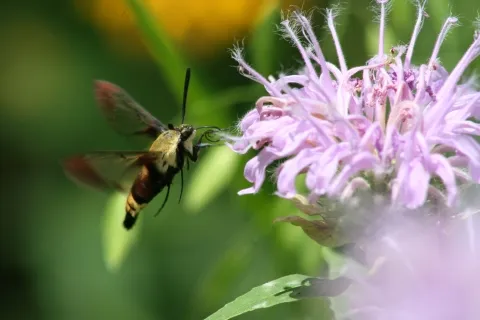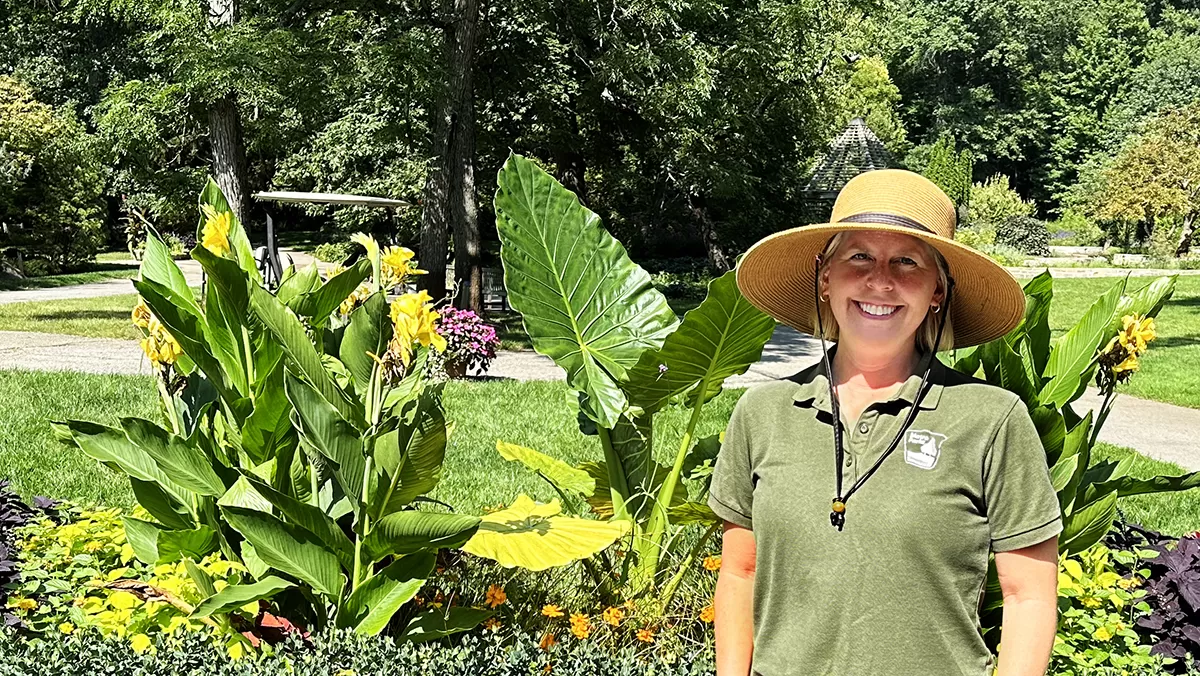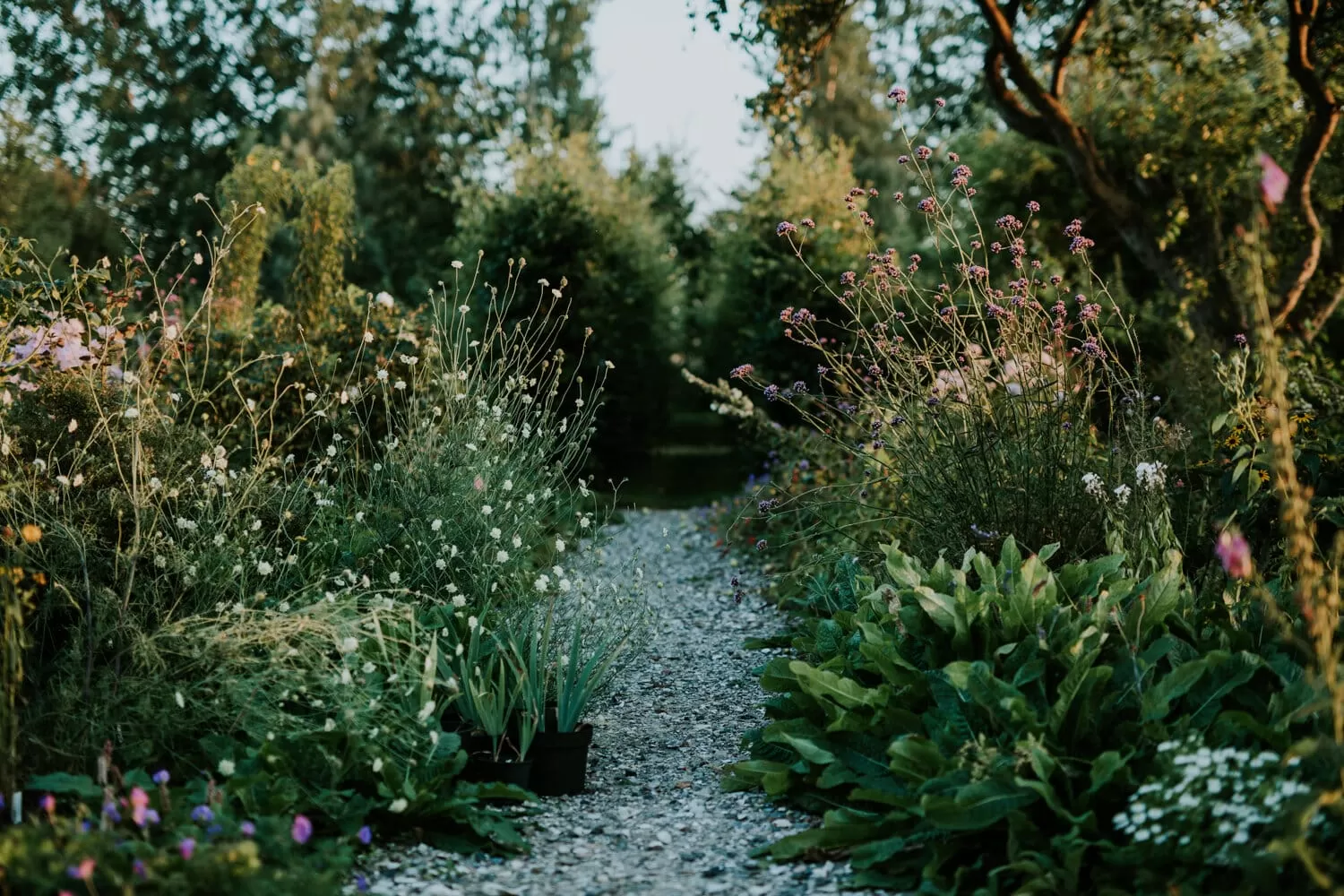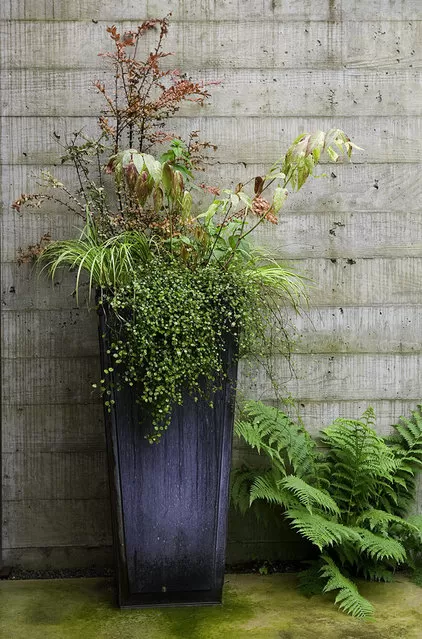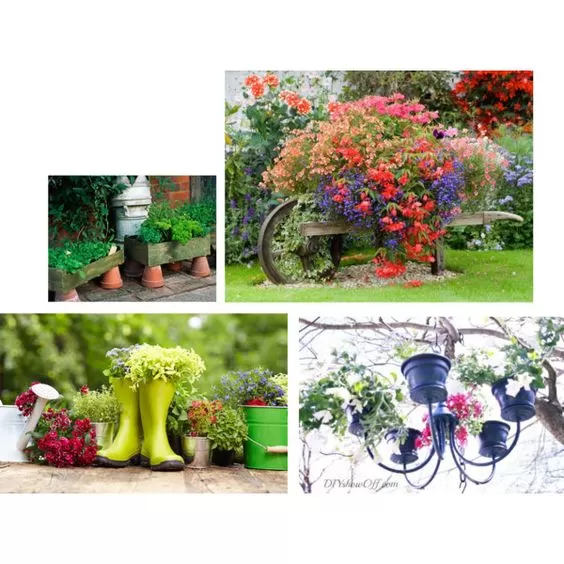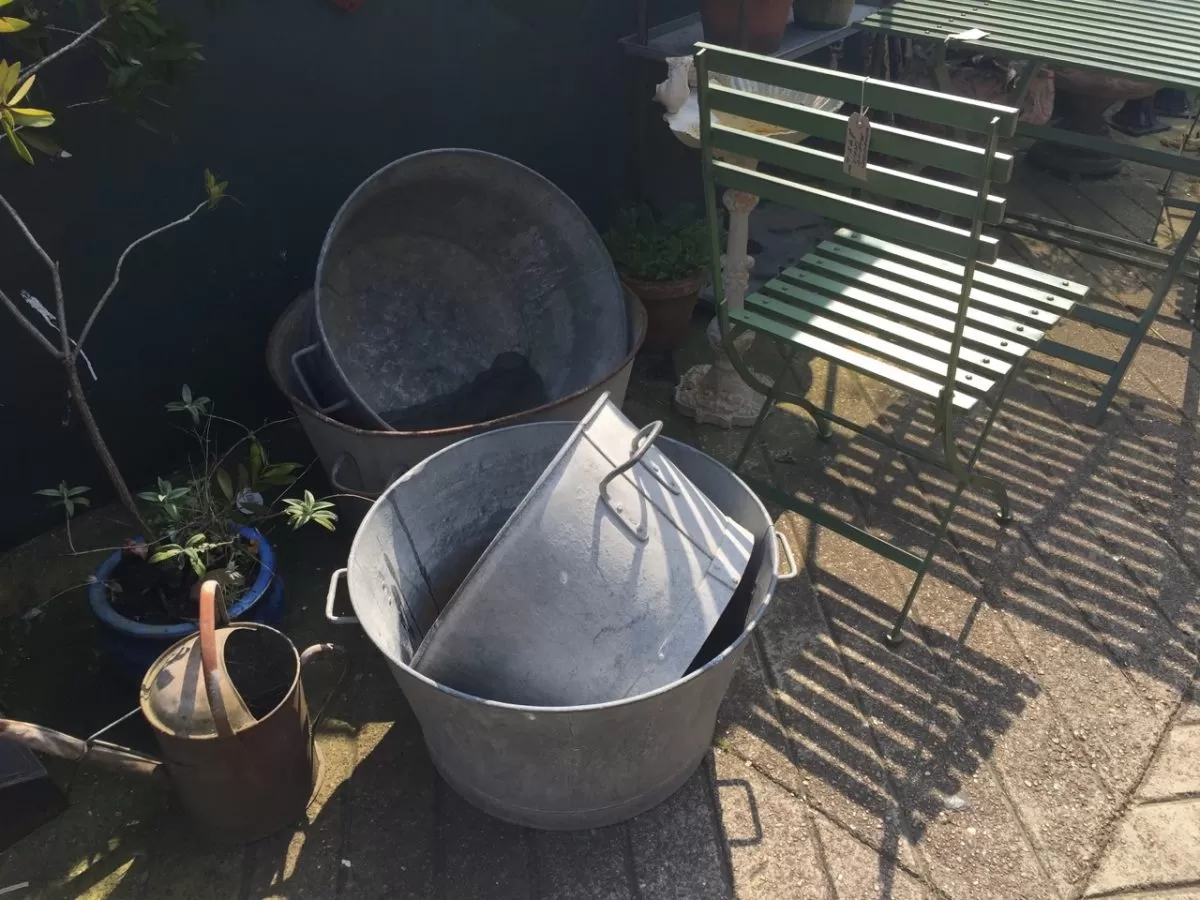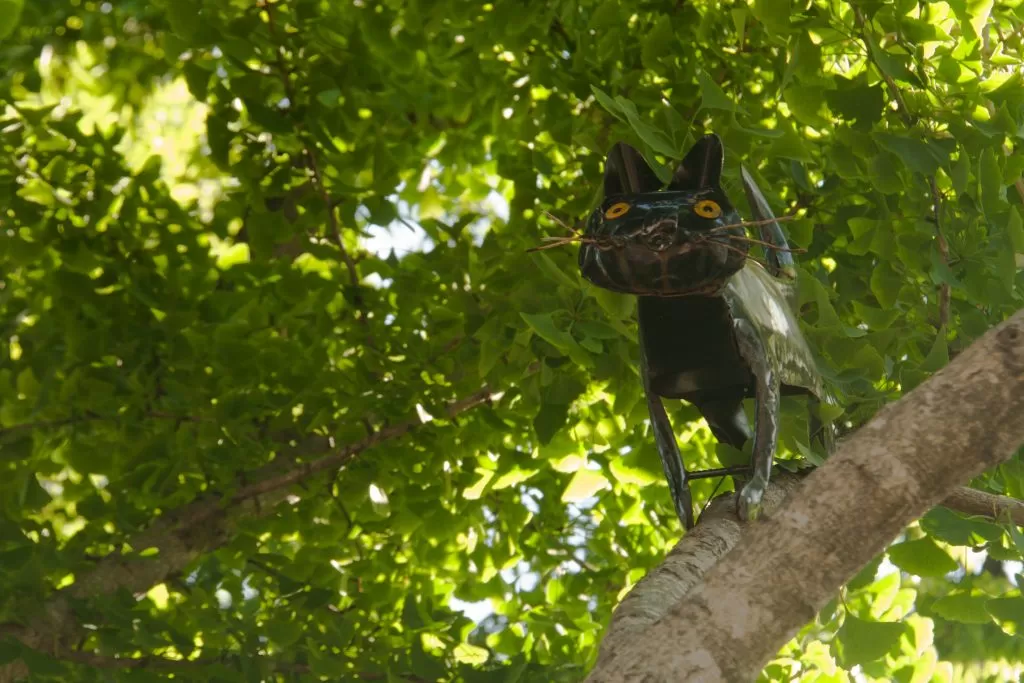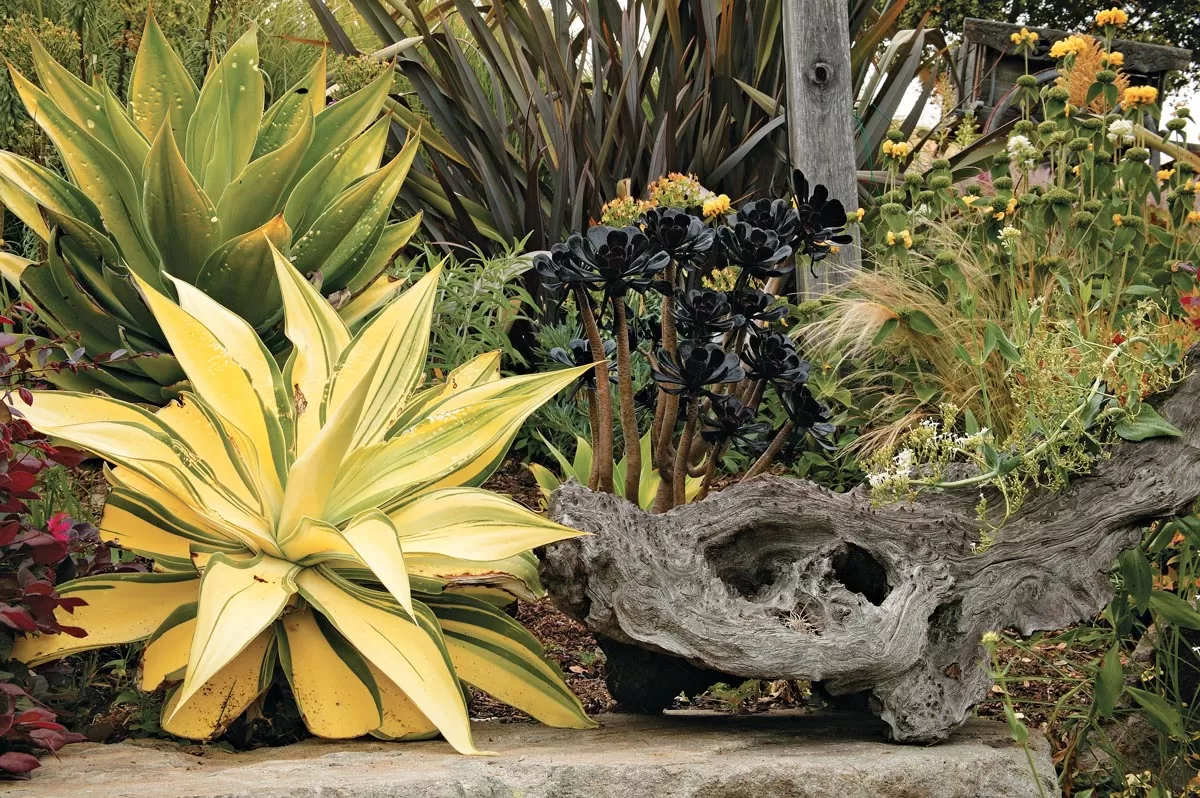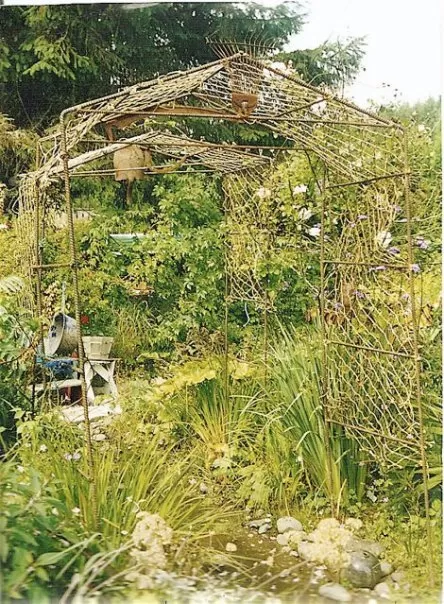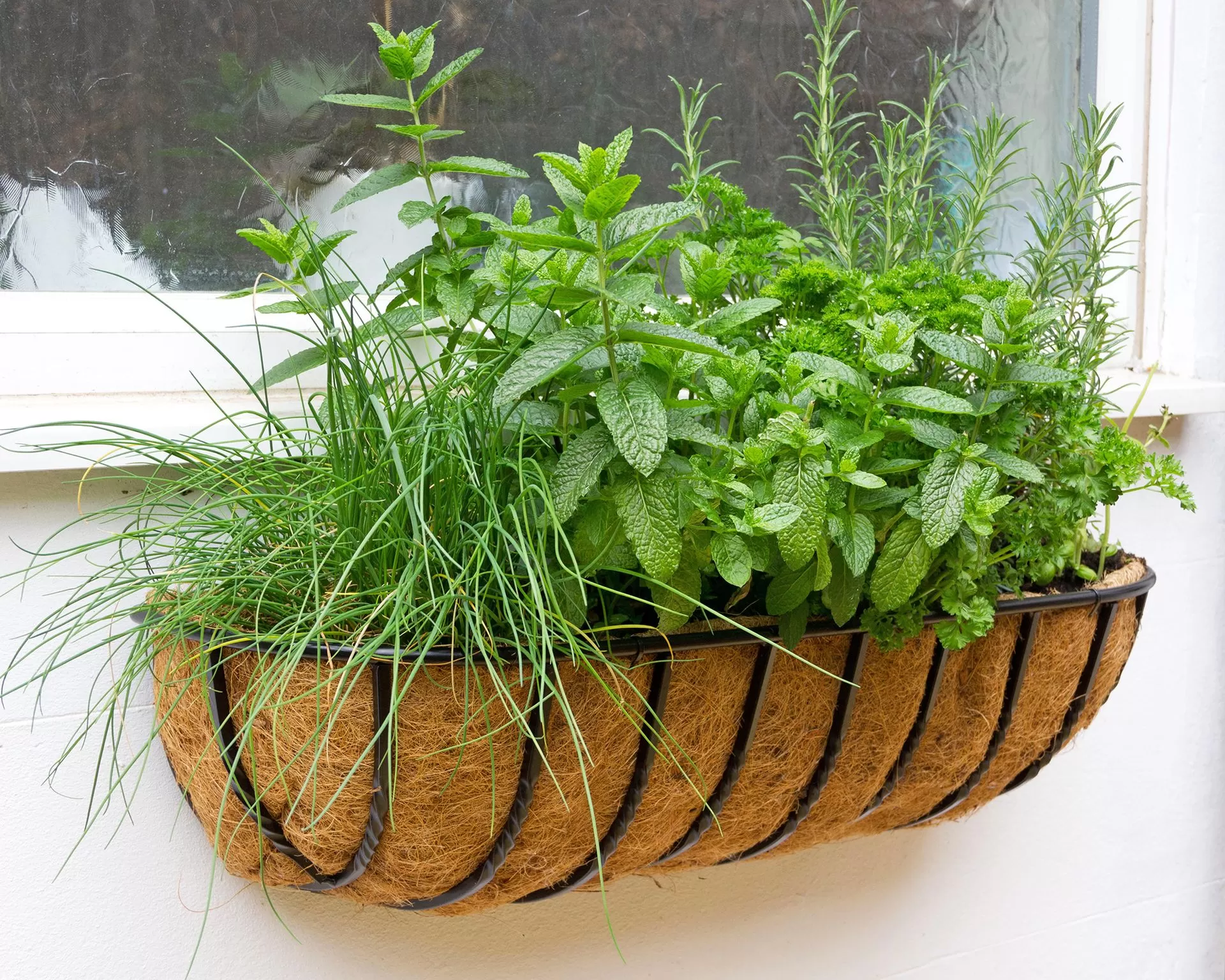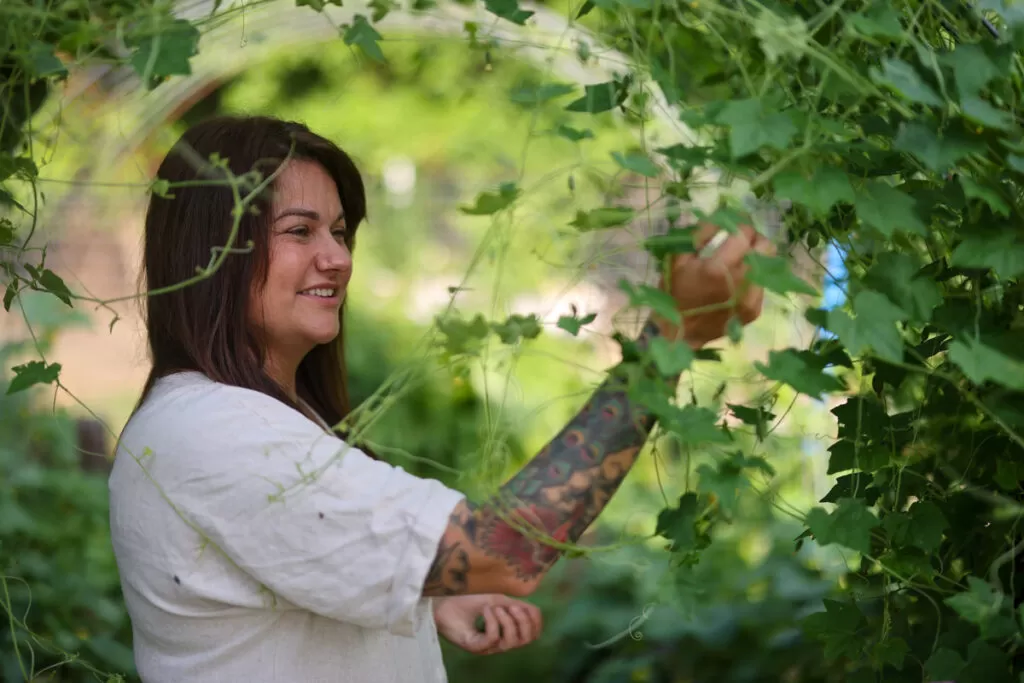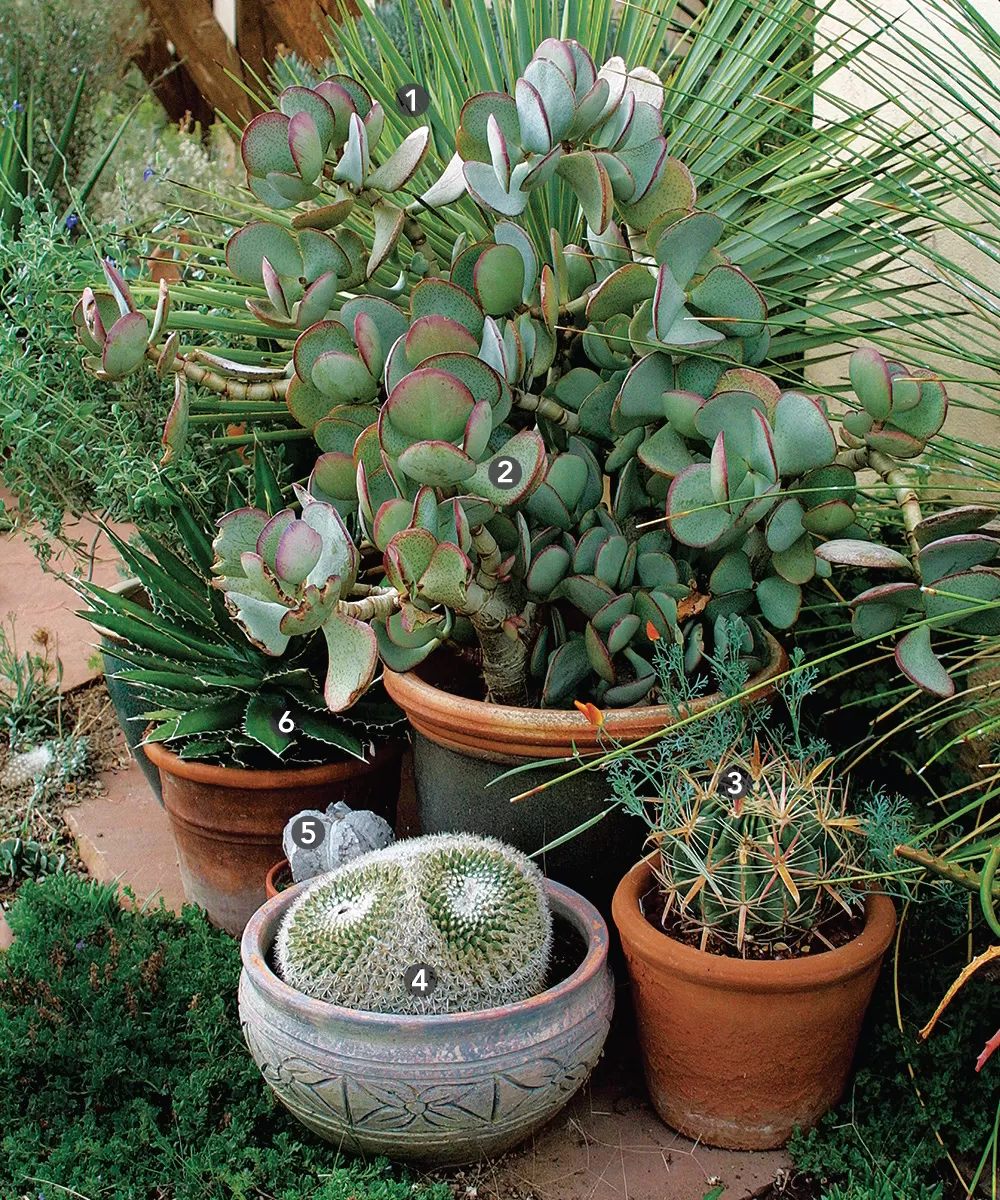Creating a garden that offers beauty and interest throughout the seasons is a deeply rewarding endeavor. It’s about more than just summer flowers; it’s about selecting plants that contribute color, texture, and form from spring’s first blush well into the quiet beauty of late autumn and even winter. One key element in achieving this extended display is thoughtfully incorporating plants with varied bloom times and lasting structural appeal.
- Unlock continuous beauty with a diverse plant palette.
- Combine early bloomers, summer stars, and late-season wonders.
- Discover perennials and shrubs that offer more than just fleeting flowers.
- Learn how extended-bloom grasses provide crucial late-season structure and texture.
- Gain confidence to design your own four-season garden masterpiece.
As your guide from Thelittle.garden, I’m excited to share some personal favorites and insights into selecting plants that keep the garden vibrant for months on end. We’ll explore species that stand out for their longevity, unique characteristics, and ability to pair beautifully with others, including the unsung heroes that are extended-bloom grasses.
Contents
Summer’s End & Fall’s Welcome: Late Bloomers & Lasting Interest
While many gardens peak in mid-summer, the truly captivating ones offer a spectacular show as the days shorten. Late-blooming perennials and shrubs, alongside plants with striking foliage or seedheads, bridge the gap between summer and the cooler months.
Reliable Performers for Sunny Spots
Sunny borders don’t have to fade after August. Many tough and beautiful plants thrive in full sun and offer blooms or structure that extend well into fall.
Threadleaf Coreopsis ‘Zagreb’
I find ‘Zagreb’ Coreopsis to be a staple in sunny borders. Its deeper yellow flowers are a lovely golden addition, more intense than some other popular cultivars. It’s a low-maintenance friend that rewards you with a long bloom time.
- Scientific Name: Coreopsis verticillata ‘Zagreb’
- Common Name: Threadleaf coreopsis
- Zone: 3-9
- Light: Full Sun
- Humidity: Low to moderate
- Water: Low to moderate (Dry to moderate, well-drained soil)
Purple Coneflower
No sunny native garden feels complete without Echinacea purpurea. These sturdy plants hold their erect flowers high, welcoming pollinators and adding cheerful color. I always resist the urge to deadhead, knowing the dried seedheads are a feast for birds in fall and winter.
- Scientific Name: Echinacea purpurea
- Common Name: Purple coneflower
- Zone: 3-9
- Light: Full Sun to Partial Shade
- Humidity: Low to moderate
- Water: Low to moderate (Dry to moderate, well-drained soil)
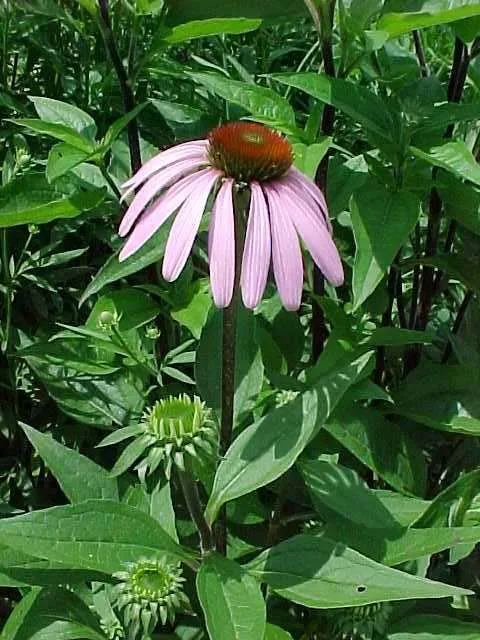 Purple coneflower with vibrant pink petals held upright on sturdy stems in full sun
Purple coneflower with vibrant pink petals held upright on sturdy stems in full sun
Tennessee Coneflower
Echinacea tennesseensis is a real treat for the sunny border. Its distinctive upward-curving, deep pink ray flowers make it stand out. It’s wonderful to see this plant, once endangered, now finding a prominent place in home landscapes.
- Scientific Name: Echinacea tennesseensis
- Common Name: Tennessee coneflower
- Zone: 5-8
- Light: Full Sun
- Humidity: Low to moderate
- Water: Low to moderate (Dry to moderate, well-drained soil)
Gaura
Gaura lindheimeri is a fantastic choice for a long-flowering plant in a sunny spot. I love its airy stems, which give it a “see-through” quality perfect for layering. It truly thrives in dry, hot conditions, proving that beauty doesn’t always need constant fuss.
- Scientific Name: Gaura lindheimeri
- Common Name: Gaura
- Zone: 5-9
- Light: Full Sun
- Humidity: Low
- Water: Low (Dry, well-drained soil)
 Airy white butterfly-like flowers of Gaura lindheimeri on slender stems
Airy white butterfly-like flowers of Gaura lindheimeri on slender stems
Russian Sage
Russian sage (Perovskia atriplicifolia) is a blue-flowering favorite of mine for sunny locations. Its wispy blue flower spikes provide a cooling effect and airy appearance, making it excellent for mingling with bolder plants like coneflowers, daylilies, and yarrows. The crushed foliage releases a lovely fragrance, too! ‘Filigran’ is a cultivar I particularly enjoy for its finer foliage texture.
-
Scientific Name: Perovskia atriplicifolia
-
Common Name: Russian sage
-
Zone: 4-9
-
Light: Full Sun
-
Humidity: Low
-
Water: Low (Dry, well-drained soil)
-
Scientific Name: Perovskia ‘Filigran’
-
Common Name: Russian sage ‘Filigran’
-
Zone: 4-9
-
Light: Full Sun
-
Humidity: Low
-
Water: Low (Dry, well-drained soil)
 Wispry blue-violet flower spikes and gray-green foliage of Russian sage Perovskia atriplicifolia
Wispry blue-violet flower spikes and gray-green foliage of Russian sage Perovskia atriplicifolia
Shade Garden Stars That Shine Late
Shade gardens aren’t just for spring ephemerals. Many beautiful perennials come into their own later in the season, providing texture and color when other plants are fading.
Hardy Begonia
Begonia grandis subsp. evansiana is a delightful late-blooming begonia perfect for woodland settings. The red veins on the undersides of its leaves add a subtle touch of interest, and its late flowers are a welcome sight. Plant it in masses for a truly striking effect that will have everyone talking.
- Scientific Name: Begonia grandis subsp. evansiana
- Common Name: Hardy begonia
- Zone: 6-9
- Light: Partial Shade to Full Shade
- Humidity: High
- Water: Moderate to high (Moist, well-drained soil)
 Pink flowers and green leaves with red veins on the underside of Hardy Begonia grandis evansiana
Pink flowers and green leaves with red veins on the underside of Hardy Begonia grandis evansiana
Japanese Anemone
Japanese anemones (Anemone hupehensis var. japonica) are a pleasure to behold with their elegant, late-season flowers held on wiry stems. ‘Pamina’ is a cultivar known for its beautiful blooms that brighten shady borders well into fall. They bring a touch of grace to woodland gardens as the season wanes.
- Scientific Name: Anemone hupehensis var. japonica ‘Pamina’
- Common Name: Japanese anemone ‘Pamina’
- Zone: 4-8
- Light: Partial Shade
- Humidity: Moderate
- Water: Moderate to high (Moist, well-drained soil)
 Pink semi-double flowers of Japanese Anemone hupehensis var japonica Pamina
Pink semi-double flowers of Japanese Anemone hupehensis var japonica Pamina
Shellflower
Chelone lyonii is one of my favorites for moist, shaded areas. The unique snapdragon-like flowers, resembling a turtle’s head, appear late in the season, adding unexpected color to the woodland garden. They pair beautifully with ferns and astilbes.
- Scientific Name: Chelone lyonii
- Common Name: Shellflower
- Zone: 3-8
- Light: Partial Shade to Full Shade
- Humidity: High
- Water: High (Moist to wet soil)
 Deep pink, hooded flowers of Shellflower Chelone lyonii
Deep pink, hooded flowers of Shellflower Chelone lyonii
The Role of Extended-Bloom Grasses
While many people think of flowers when aiming for extended garden interest, extended-bloom grasses (more accurately described as grasses providing extended seasonal appeal or late-season structure) are absolute game-changers. They don’t necessarily “bloom” in the traditional sense for long periods, but their plumes, seed heads, and often beautiful fall or winter foliage provide essential texture, movement, and structure long after most flowers have faded.
These grasses are the backbone of a four-season garden design. They catch the light beautifully in the low sun of autumn and winter, rustle musically in the breeze, and provide crucial vertical interest and naturalistic charm. Incorporating a variety of extended-bloom grasses can elevate your garden from merely pretty to truly captivating year-round. They pair wonderfully with many of the flowering perennials and shrubs we’ve discussed, providing a soft, dynamic contrast to bolder forms and colors. Think of the way feathery grass plumes complement the solid shapes of asters or coneflowers!
Building a Garden with Continuous Appeal
Achieving extended bloom and interest is about layering different plant types with staggered seasons of appeal.
Early to Mid-Season Contributors
Even plants primarily known for earlier blooms can contribute to the garden’s overall look and structure throughout the season.
Bluebeard
Caryopteris x clandonensis ‘Longwood Blue’ is a perennial I frequently use as a small shrub in sunny locations. While its main bloom might be mid to late summer, perfectly timed with monarch migration (a sight I always enjoy!), its presence and structure contribute to the garden’s layers beforehand. It pairs well with yellow-flowered plants for a striking contrast.
- Scientific Name: Caryopteris x clandonensis ‘Longwood Blue’
- Common Name: Bluebeard ‘Longwood Blue’
- Zone: 5-9
- Light: Full Sun
- Humidity: Moderate
- Water: Moderate (Well-drained soil)
 Compact bluebeard shrub with clusters of small blue flowers
Compact bluebeard shrub with clusters of small blue flowers
Rose of Sharon
Hibiscus syriacus ‘Diana’ is a fantastic late-season bloomer. I appreciate this cultivar specifically for its large, pure white flowers that continue to open from summer well into fall. It can be used as a specimen or in groups, adding a touch of tropical flair just when other things are winding down. There’s definitely a renewed appreciation for these hardy shrubs, and for good reason!
- Scientific Name: Hibiscus syriacus ‘Diana’
- Common Name: Rose of Sharon ‘Diana’
- Zone: 5-8
- Light: Full Sun
- Humidity: Moderate
- Water: Moderate to high (Moist, well-drained soil)
 Large, pure white flowers of Hibiscus syriacus Diana
Large, pure white flowers of Hibiscus syriacus Diana
St. John’s Wort
Hypericum calycinum is a lesser-known perennial that excels as a groundcover in full sun. Its blue-green foliage is attractive, providing a solid carpet under trees and shrubs or at the front of the border, even when its yellow flowers aren’t present. Pairing it with blue flowers creates a beautiful complementary scheme.
- Scientific Name: Hypericum calycinum
- Common Name: St. John’s wort
- Zone: 5-8
- Light: Full Sun to Partial Shade
- Humidity: Moderate
- Water: Low to moderate (Adaptable, drought tolerant once established)
 Yellow, cup-shaped flowers and glossy foliage of Hypericum calycinum used as groundcover
Yellow, cup-shaped flowers and glossy foliage of Hypericum calycinum used as groundcover
Bear’s Breeches
Acanthus spinosus makes a bold architectural statement. I like to place it in the shade garden where its dramatic foliage truly stands out and commands attention even without flowers. It provides essential structure and texture.
- Scientific Name: Acanthus spinosus
- Common Name: Bear’s breeches
- Zone: 5-9
- Light: Partial Shade to Full Shade
- Humidity: Moderate
- Water: Moderate (Well-drained soil)
 Large, spiny, architectural leaves of Acanthus spinosus in a shaded garden
Large, spiny, architectural leaves of Acanthus spinosus in a shaded garden
Yarrow
My sunny perennial gardens always have space for yarrow. ‘Coronation Gold’ (Achillea ‘Coronation Gold’) is particularly robust in summer, and its flat-topped flower heads are excellent landing pads for butterflies. They also make wonderful cut flowers. ‘Paprika’ (Achillea millefolium ‘Paprika’) adds vibrant red blooms and quickly forms dense mounds. Yarrows provide cheerful color for an extended period.
- Scientific Name: Achillea ‘Coronation Gold’
- Common Name: Yarrow ‘Coronation Gold’
- Zone: 3-8
- Light: Full Sun
- Humidity: Low to moderate
- Water: Low (Well-drained, dry soil)
 Golden-yellow flat-topped flower clusters of Achillea Coronation Gold
Golden-yellow flat-topped flower clusters of Achillea Coronation Gold
- Scientific Name: Achillea millefolium ‘Paprika’
- Common Name: Yarrow ‘Paprika’
- Zone: 4-9
- Light: Full Sun
- Humidity: Low to moderate
- Water: Low (Well-drained, dry soil)
 Vibrant red flat-topped flower clusters of Achillea millefolium Paprika
Vibrant red flat-topped flower clusters of Achillea millefolium Paprika
Ajania
Ajania pacifica is a plant I find very attractive, especially for its ornamental foliage. The elegant silver-edged leaves are a beautiful feature, providing texture and color contrast even before its late yellow flowers appear.
- Scientific Name: Ajania pacifica
- Common Name: Ajania
- Zone: 5-9
- Light: Full Sun
- Humidity: Moderate
- Water: Moderate (Well-drained soil)
 Silver-edged leaves and small yellow button flowers of Ajania pacifica
Silver-edged leaves and small yellow button flowers of Ajania pacifica
Lady’s Mantle
Alchemilla mollis makes an excellent groundcover for the shady border with its densely hairy, scalloped foliage that holds dewdrops like jewels. The blue-green leaves provide great texture and are lovely companions for blue hostas and lime-green flowers.
- Scientific Name: Alchemilla mollis
- Common Name: Lady’s mantle
- Zone: 3-8
- Light: Partial Shade to Full Shade
- Humidity: Moderate to high
- Water: Moderate to high (Moist, well-drained soil)
 Soft, fuzzy, scalloped leaves holding water droplets of Alchemilla mollis
Soft, fuzzy, scalloped leaves holding water droplets of Alchemilla mollis
Blue Star
Amsonia hubrichtii brings a wonderful airy appearance to the border with its fine, linear foliage. The blue star-shaped flowers are lovely in late spring, but I especially love the light, golden yellow fall color that truly extends its season of interest. While slow to establish, it is absolutely worth the patience. Amsonia tabernaemontana is another tough Blue Star with similar blue flowers and nice fall color, great for combining with other full sun perennials.
- Scientific Name: Amsonia hubrichtii
- Common Name: Blue star (Arkansas Blue Star)
- Zone: 4-9
- Light: Full Sun to Partial Shade
- Humidity: Moderate
- Water: Moderate (Adaptable, prefers well-drained soil)
 Feathery, fine-textured foliage of Amsonia hubrichtii
Feathery, fine-textured foliage of Amsonia hubrichtii
- Scientific Name: Amsonia tabernaemontana
- Common Name: Blue star (Eastern Blue Star)
- Zone: 3-9
- Light: Full Sun to Partial Shade
- Humidity: Moderate
- Water: Moderate to high (Adaptable, tolerates wet soil)
 Star-shaped blue flowers of Amsonia tabernaemontana
Star-shaped blue flowers of Amsonia tabernaemontana
Columbine
The vibrant red of Aquilegia ‘Cardinal’ (Songbird Series) is a treat in the woodland garden, its funnel-shaped flowers attracting pollinators. Aquilegia flabellata var. pumila offers lovely blue flowers and attractive blue-green foliage, perfect for a spot up close where its smaller size can be appreciated. While spring bloomers, their foliage adds texture later.
- Scientific Name: Aquilegia (Songbird Series) ‘Cardinal’
- Common Name: Columbine ‘Cardinal’
- Zone: 3-8
- Light: Full Sun to Partial Shade
- Humidity: Moderate
- Water: Moderate (Moist, well-drained soil)
 Red and white spur-like flowers of Aquilegia Songbird Series Cardinal
Red and white spur-like flowers of Aquilegia Songbird Series Cardinal
- Scientific Name: Aquilegia flabellata var. pumila
- Common Name: Fan columbine
- Zone: 3-8
- Light: Full Sun to Partial Shade
- Humidity: Moderate
- Water: Moderate (Moist, well-drained soil)
 Blue funnel-shaped flowers and blue-green foliage of Aquilegia flabellata var pumila
Blue funnel-shaped flowers and blue-green foliage of Aquilegia flabellata var pumila
Wild Ginger
Asarum canadense is a native plant I believe is underused. Its wonderful, shiny, kidney-shaped foliage creates a fantastic groundcover for the shady garden, adding another layer of texture and interest under taller shade lovers.
- Scientific Name: Asarum canadense
- Common Name: Wild ginger
- Zone: 4-6
- Light: Full Shade to Partial Shade
- Humidity: High
- Water: High (Moist, rich soil)
 Shiny, heart-shaped leaves of Asarum canadense covering the ground
Shiny, heart-shaped leaves of Asarum canadense covering the ground
Butterfly Weed
For attracting butterflies, Asclepias tuberosa is a must-have native. Its bright orange, umbel-shaped flowers are perfect landing pads. It’s happiest in a dry spot and prefers not to be disturbed, especially in spring as it emerges late.
- Scientific Name: Asclepias tuberosa
- Common Name: Butterfly weed
- Zone: 3-9
- Light: Full Sun
- Humidity: Low
- Water: Low (Dry, well-drained soil)
 Bright orange flower clusters of Asclepias tuberosa attracting butterflies
Bright orange flower clusters of Asclepias tuberosa attracting butterflies
Astilbe
Any astilbe enhances a shade garden, but ‘Deutschland’ (Astilbe ‘Deutschland’) is particularly fine. Providing consistent moisture is key to keeping its fern-like foliage looking lush. It combines beautifully with ferns, hostas, and other shade-loving plants, offering feathery flower plumes in early to mid-summer. ‘Fanal’ (Astilbe x arendsii ‘Fanal’) offers striking blood-red panicles.
- Scientific Name: Astilbe ‘Deutschland’
- Common Name: Astilbe ‘Deutschland’
- Zone: 4-8
- Light: Partial Shade to Full Shade
- Humidity: High
- Water: High (Moist, rich soil)
 White feathery flower plumes of Astilbe Deutschland in a shade garden
White feathery flower plumes of Astilbe Deutschland in a shade garden
- Scientific Name: Astilbe x arendsii ‘Fanal’
- Common Name: Astilbe ‘Fanal’
- Zone: 4-8
- Light: Partial Shade to Full Shade
- Humidity: High
- Water: High (Moist, rich soil)
 Blood-red feathery flower plumes of Astilbe x arendsii Fanal
Blood-red feathery flower plumes of Astilbe x arendsii Fanal
Pigsqueak
Bergenia cordifolia is a long-lived, undemanding shade perennial. Its bold, heart-shaped foliage is its main feature, adding strong contrast in texture when grouped with finer-leaved plants. It’s a reliable performer providing evergreen or semi-evergreen interest.
- Scientific Name: Bergenia cordifolia
- Common Name: Pigsqueak
- Zone: 3-8
- Light: Partial Shade to Full Shade
- Humidity: Moderate
- Water: Moderate (Adaptable, prefers moist soil)
 Glossy, bold, heart-shaped leaves of Bergenia cordifolia
Glossy, bold, heart-shaped leaves of Bergenia cordifolia
Siberian Bugloss
Brunnera macrophylla offers bold, heart-shaped foliage complemented by delicate blue forget-me-not like flowers in spring. I love pairing it with other shade lovers like ferns, hostas, and epimedium, where its striking leaves provide consistent interest after the flowers are gone.
- Scientific Name: Brunnera macrophylla
- Common Name: Siberian bugloss
- Zone: 3-8
- Light: Partial Shade to Full Shade
- Humidity: Moderate to high
- Water: Moderate to high (Moist, well-drained soil)
 Heart-shaped leaves and small blue flowers of Brunnera macrophylla
Heart-shaped leaves and small blue flowers of Brunnera macrophylla
Red Valerian
Centranthus ruber is an heirloom perennial I frequently use in garden designs. Found thriving in dry soils, it offers long-lasting cut flowers and is a good source of nectar for butterflies, blooming for an extended period in sunny spots.
- Scientific Name: Centranthus ruber
- Common Name: Red valerian
- Zone: 4-8
- Light: Full Sun
- Humidity: Low
- Water: Low (Dry, well-drained soil)
 Clusters of small red flowers on tall stems of Centranthus ruber
Clusters of small red flowers on tall stems of Centranthus ruber
Plumbago
Ceratostigma plumbaginoides is a late-blooming perennial with beautiful blue flowers. It’s slow to emerge in spring, so be patient! I like using it as a groundcover under trees or shrubs and planting early spring bulbs with it for earlier interest in the same spot. Its foliage turns a lovely bronze-red in fall.
- Scientific Name: Ceratostigma plumbaginoides
- Common Name: Plumbago
- Zone: 5-9
- Light: Full Sun to Partial Shade
- Humidity: Moderate
- Water: Low to moderate (Well-drained soil)
 Bright blue flowers and green foliage of Ceratostigma plumbaginoides
Bright blue flowers and green foliage of Ceratostigma plumbaginoides
Bleeding Heart
Dicentra spectabilis is a popular cottage garden plant with charming heart-shaped flowers in spring. While it goes dormant in summer, leaving a void, planting ferns or later-emerging perennials nearby ensures continuous interest in its spot.
- Scientific Name: Dicentra spectabilis
- Common Name: Bleeding heart
- Zone: 3-9
- Light: Partial Shade to Full Shade
- Humidity: Moderate to high
- Water: Moderate (Moist, well-drained soil)
 Pink and white heart-shaped flowers of Dicentra spectabilis hanging from arching stems
Pink and white heart-shaped flowers of Dicentra spectabilis hanging from arching stems
Joe Pye Weed
Eutrochium purpureum is a bold native that makes a statement at the back of the border, reaching 6-8 feet tall. Its large flower heads appear late in the season and are highly attractive to butterflies. It’s excellent for meadow or wild gardens and adds significant vertical interest.
- Scientific Name: Eutrochium purpureum
- Common Name: Joe Pye weed
- Zone: 3-9
- Light: Full Sun to Partial Shade
- Humidity: High
- Water: High (Moist to wet soil)
 Tall stems topped with large clusters of mauve-pink flowers of Eutrochium purpureum
Tall stems topped with large clusters of mauve-pink flowers of Eutrochium purpureum
Hellebore
Helleborus orientalis is finally getting the recognition it deserves. Its leathery, often evergreen foliage is a delight in the woodland garden, providing interest throughout the year, especially in late winter/early spring when it blooms. It’s fantastic under trees and shrubs.
- Scientific Name: Helleborus orientalis
- Common Name: Hellebore (Lenten rose)
- Zone: 4-9
- Light: Partial Shade to Full Shade
- Humidity: Moderate
- Water: Moderate (Moist, well-drained soil)
 Nodding, cup-shaped flowers of Helleborus orientalis in shades of pink and purple
Nodding, cup-shaped flowers of Helleborus orientalis in shades of pink and purple
Coral Bells
The genus Heuchera plays a vital role in herbaceous borders, primarily for its diverse and colorful foliage. I find the leaves, like the deep purple of Heuchera micrantha var. diversifolia ‘Palace Purple’, are more impactful in design than the delicate flowers. They combine beautifully with blue or gold hostas and provide consistent foliage interest.
- Scientific Name: Heuchera micrantha var. diversifolia ‘Palace Purple’
- Common Name: Coral bells ‘Palace Purple’
- Zone: 4-9
- Light: Partial Shade
- Humidity: Moderate
- Water: Moderate (Moist, well-drained soil)
 Deep purple, lobed foliage of Heuchera micrantha var diversifolia Palace Purple
Deep purple, lobed foliage of Heuchera micrantha var diversifolia Palace Purple
Hardy Hibiscus
Hibiscus ‘Blue River II’ is a fantastic hardy hibiscus with tropical-looking foliage and huge white flowers that don’t need staking. I like placing it at the back of a sunny border or using it as a specimen. Its large presence can be complemented by the finer textures of ornamental or extended-bloom grasses. Hibiscus coccineus, the scarlet rose mallow, is another tropical-looking option that thrives in moist, sunny spots.
- Scientific Name: Hibiscus ‘Blue River II’
- Common Name: Hardy hibiscus ‘Blue River II’
- Zone: 4-9
- Light: Full Sun
- Humidity: Moderate to high
- Water: Moderate to high (Moist, well-drained soil)
 Large white dinnerplate-sized flower of Hibiscus Blue River II
Large white dinnerplate-sized flower of Hibiscus Blue River II
- Scientific Name: Hibiscus coccineus
- Common Name: Scarlet rose mallow
- Zone: 6-9
- Light: Full Sun to Partial Shade
- Humidity: High
- Water: High (Moist to wet soil)
 Bright red, star-shaped flowers and palmately lobed leaves of Hibiscus coccineus
Bright red, star-shaped flowers and palmately lobed leaves of Hibiscus coccineus
Shasta Daisy
Leucanthemum x superbum ‘Alaska’ is one of the easiest perennials to grow. Plant it in full sun with good drainage, and you’ll have a garden full of cut flowers with a long bloom time. Shasta daisies pair well with many other sun lovers like yarrows, sedums, and coneflowers.
- Scientific Name: Leucanthemum x superbum ‘Alaska’
- Common Name: Shasta daisy ‘Alaska’
- Zone: 5-9
- Light: Full Sun
- Humidity: Moderate
- Water: Moderate (Well-drained soil)
 Classic white ray flowers with yellow centers of Leucanthemum x superbum Alaska
Classic white ray flowers with yellow centers of Leucanthemum x superbum Alaska
Leopard Plant
Ligularia dentata ‘Desdemona’ needs a cool, moist spot to thrive, but when happy, its bold foliage makes a dramatic statement. It’s wonderful paired with ferns and astilbes in a shaded area, adding significant texture.
- Scientific Name: Ligularia dentata ‘Desdemona’
- Common Name: Leopard plant ‘Desdemona’
- Zone: 4-8
- Light: Partial Shade to Full Shade
- Humidity: High
- Water: High (Moist to wet soil)
 Large, dark bronzy-purple leaves and orange-yellow daisy-like flowers of Ligularia dentata Desdemona
Large, dark bronzy-purple leaves and orange-yellow daisy-like flowers of Ligularia dentata Desdemona
Cardinal Flower & Blue Cardinal Flower
Lobelia cardinalis is a hummingbird magnet with striking scarlet-red flowers in late summer. It loves moist, shady locations. Lobelia siphilitica offers beautiful blue flowers slightly later. Both are native gems for woodland stream areas or moist garden spots, adding vertical spires of intense color.
- Scientific Name: Lobelia cardinalis
- Common Name: Cardinal flower
- Zone: 3-9
- Light: Partial Shade to Full Shade
- Humidity: High
- Water: High (Moist to wet soil)
 Tall spike of bright red tubular flowers of Lobelia cardinalis
Tall spike of bright red tubular flowers of Lobelia cardinalis
- Scientific Name: Lobelia siphilitica
- Common Name: Blue cardinal flower
- Zone: 4-8
- Light: Partial Shade to Full Shade
- Humidity: High
- Water: High (Moist to wet soil)
 Tall spike of blue tubular flowers of Lobelia siphilitica
Tall spike of blue tubular flowers of Lobelia siphilitica
Beardtongue
Penstemon digitalis ‘Husker Red’ features attractive narrow, pointed foliage with a reddish tint that provides great contrast to green-leaved plants. Its spires of white flowers attract hummingbirds. It’s a valuable plant for adding vertical interest and color variation.
- Scientific Name: Penstemon digitalis ‘Husker Red’
- Common Name: Beardtongue ‘Husker Red’
- Zone: 3-8
- Light: Full Sun
- Humidity: Low
- Water: Low to moderate (Well-drained soil)
 White tubular flowers on dark stems with purplish-red foliage of Penstemon digitalis Husker Red
White tubular flowers on dark stems with purplish-red foliage of Penstemon digitalis Husker Red
Solomon’s Seal
Polygonatum odoratum var. pluriflorum ‘Variegatum’ offers graceful, arching stems with variegated foliage that brighten any shade garden. The stems tend to bend in the same direction, creating a lovely effect. It combines beautifully with ferns, hostas, and other woodland plants.
- Scientific Name: Polygonatum odoratum var. pluriflorum ‘Variegatum’
- Common Name: Variegated Solomon’s seal
- Zone: 3-8
- Light: Partial Shade to Full Shade
- Humidity: Moderate
- Water: Moderate (Moist, well-drained soil)
 Arching stems with variegated green and white foliage and dangling white flowers of Polygonatum odoratum var pluriflorum Variegatum
Arching stems with variegated green and white foliage and dangling white flowers of Polygonatum odoratum var pluriflorum Variegatum
Missouri Coneflower
Rudbeckia missouriensis is a delightful, tough native rudbeckia for full sun. Its ray-like petals are more delicate than other coneflowers, playing a subtler but equally charming role in the sunny garden. It’s a native that deserves to be more widely known!
- Scientific Name: Rudbeckia missouriensis
- Common Name: Missouri coneflower
- Zone: 4-8
- Light: Full Sun
- Humidity: Low
- Water: Low (Dry, well-drained soil)
 Yellow daisy-like flowers with drooping petals and a prominent dark cone of Rudbeckia missouriensis
Yellow daisy-like flowers with drooping petals and a prominent dark cone of Rudbeckia missouriensis
Orange Stonecrop
Sedum kamtschaticum var. ellacombeanum is an easy-to-grow groundcover for sunny locations. Its short height makes it useful for neat mass plantings around perennials and shrubs, adding texture and later season color with its blooms and seed heads.
- Scientific Name: Sedum kamtschaticum var. ellacombeanum
- Common Name: Orange stonecrop
- Zone: 3-8
- Light: Full Sun
- Humidity: Low
- Water: Low (Dry, well-drained soil)
 Succulent green leaves and yellow star-shaped flowers of Sedum kamtschaticum var ellacombeanum
Succulent green leaves and yellow star-shaped flowers of Sedum kamtschaticum var ellacombeanum
Rough Goldenrod ‘Fireworks’
The arrival of autumn is truly announced when Solidago rugosa ‘Fireworks’ bursts into bloom. Its arching yellow flower panicles resemble fireworks and are a spectacular sight. Pairing it with late-flowering asters creates a classic fall combination.
- Scientific Name: Solidago rugosa ‘Fireworks’
- Common Name: Rough goldenrod ‘Fireworks’
- Zone: 4-9
- Light: Full Sun
- Humidity: Low to moderate
- Water: Moderate (Adaptable, prefers moist soil but tolerates dry)
 Arching panicles of bright yellow flowers resembling fireworks on Solidago rugosa Fireworks
Arching panicles of bright yellow flowers resembling fireworks on Solidago rugosa Fireworks
New England Aster
New England asters (Symphyotrichum novae-angliae) are wonderful native plants for late-season color. ‘Andenken an Alma Pötschke’ offers vivid, hot-pink blooms late into fall, perfect for the mid to back border. ‘Purple Dome’ is a shorter, mounding cultivar (only about 18 inches) that keeps a nice shape without pinching and provides delightful purple flowers into the cool autumn days. These asters pair beautifully with goldenrods and extended-bloom grasses. Symphyotrichum oblongifolium, the aromatic aster, is another native that offers late color and fragrant foliage, mixing well with grasses and sedums.
- Scientific Name: Symphyotrichum novae-angliae ‘Andenken an Alma Pötschke’
- Common Name: New England aster ‘Andenken an Alma Pötschke’
- Zone: 4-8
- Light: Full Sun
- Humidity: Moderate
- Water: Moderate (Moist, well-drained soil)
 Vivid hot pink daisy-like flowers of Symphyotrichum novae-angliae Andenken an Alma Pötschke
Vivid hot pink daisy-like flowers of Symphyotrichum novae-angliae Andenken an Alma Pötschke
- Scientific Name: Symphyotrichum novae-angliae ‘Purple Dome’
- Common Name: New England aster ‘Purple Dome’
- Zone: 4-8
- Light: Full Sun
- Humidity: Moderate
- Water: Moderate (Moist, well-drained soil)
 Compact mound of purple daisy-like flowers of Symphyotrichum novae-angliae Purple Dome
Compact mound of purple daisy-like flowers of Symphyotrichum novae-angliae Purple Dome
- Scientific Name: Symphyotrichum oblongifolium
- Common Name: Aromatic aster
- Zone: 3-8
- Light: Full Sun
- Humidity: Low
- Water: Low (Dry, well-drained soil)
 Lavender-blue daisy-like flowers with yellow centers of Symphyotrichum oblongifolium
Lavender-blue daisy-like flowers with yellow centers of Symphyotrichum oblongifolium
Conclusion
Designing a garden with extended bloom and seasonal interest is a journey of discovery and delight. By incorporating a variety of plants with different peak seasons, from the early charm of columbines and bleeding hearts to the late beauty of asters, anemones, and the crucial structure provided by extended-bloom grasses, you can create a landscape that offers continuous beauty and brings joy throughout the year. Don’t be afraid to experiment and tell your own garden story!
Have you planted any of these beauties in your garden? What are your favorite plants for extending the season? Share your experiences in the comments below, or explore more plant ideas on Thelittle.garden!
